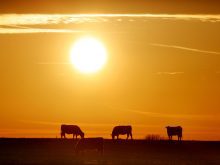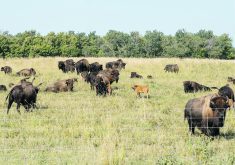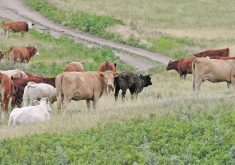Prairies are ahead of the East in carbon sequestration because of reduced tillage, but it doesn’t work as well in the East
Agricultural soil will play a huge role in the push to zero emissions by 2050, but their diversity makes a one-size-fits-all policy impossible.
Dr. Susan Wood-Bohm, distinguished fellow at the Canadian Agri-food Policy Institute, said there is no single solution because climate and soils are so different across the country.
The Prairies are far ahead of the East in carbon sequestration because of the wide adoption of reduced tillage.
“Those techniques don’t work nearly as well in the eastern part of the country because the soils are different. If I say we all need to adopt reduced tillage you’ve already done it and over here, we’re having a really hard time getting that to work for us,” she said in an interview.
Read Also

Know what costs are involved in keeping crops in the bin
When you’re looking at full bins and rising calf prices, the human reflex is to hold on and hope for more. That’s not a plan. It’s a bet. Storage has a price tag.
“For example, in southwestern Ontario and southern Quebec where corn is grown, we often have a lot of debris left on the ground in the spring and to do no-till through that debris is very difficult.
“We might need to look at some other techniques to try to improve our soil carbon sequestration.”
Wood-Bohm recently published a paper covering the basics of soil science to help policy makers understand what they are dealing with.
“For a farmer, it’s a little bit simplistic,” she said.
But the paper has been submitted to the federal standing committee on agriculture, which is currently studying agriculture and the environment.
Wood-Bohm said all stakeholders are grappling with how to reduce agricultural emissions, sequester more carbon and still produce the yields that keep farmers economically viable.
She suggested all farmers can benefit from cover cropping but it won’t always work every year.
“In the West, if you get an early crop and get it off in time then you can do cover cropping and that really helps,” she said. “But that’s not always possible in the West just because of the contraventions of the soil type and the length of the growing season.”
Even parts of the same farm won’t be suitable, she said.
But there are other possibilities that farmers should consider.
Soil testing has been done rather sporadically, said Wood-Bohm, because it’s expensive.
“It needs to be done more frequently,” she said. “There are new technologies that allow us to, as they drive over a field, use sensor technology to help us understand what’s going on in that soil and I think we’re going to see an increase in the use of those technologies as part of our precision agriculture trend.”
At the landscape level, technologies such as LIDAR will be more in play.
Wood-Bohm said knowing what’s happening deeper in the soil is valuable information that could affect policy, too.
Soil microbe activity affects carbon sequestration by both pulling carbon deeper and moving it back up where it’s more easily lost.
“There’s a huge amount of variability and it’s difficult for us to look at permanence when we talk about carbon sequestration because true permanence, true really deep long-term carbon storage, takes eons and in agriculture we don’t talk in those timeframes, so carbon sequestration is something that happens over geological time frames not a farming cycle,” she said.
Farmers can help the set the stage for extensive storage of deep carbon but have to rely on natural processes for it to work.
Wood-Bohm said the issue of carbon credits has become contentious because western farmers won’t get the credits in the way that they’d like. She said they should also consider they have achieved the environmental benefit that is coming back to them through better water and nutrient management and higher yields.
She also said Canada has signed on to the 4 X 1000 international initiative that asks farmers to use beneficial management practices to increase their local soil carbon by .4 percent each year.
Wood-Bohm said the initiative was launched in Paris in 2015 and more than 200 countries have signed on, yet little is heard about it. However, adding that .4 percent per year could offset new annual greenhouse gas emissions from all sources, which adds to the potential for agriculture to be a leader.
“It is estimated that in the actively managed agricultural soils in Canada the stable pools of carbon are about 4,140 megatonnes of carbon in the top 30 centimetres of soil and 5,500 Mt to a depth of 100 (centimetres),” said her paper. “Management practices yield gains of 0.1 to 0.5 tonnes of carbon per hectare per year, so the 4 X 1000 target is technically achievable in Canada.”
Research has found that increasing soil organic carbon in agricultural soils by .4 percent would add about 16.6 Mt in the top 30 cm by sequestering 60.8 Mt of carbon dioxide per year, or about 14 percent of Canada’s 2030 target, she noted.
















